From pixels to realism, the history of video games
January 23, 2023
Gaining popularity over time, video games have existed for a reasonably long time, even before the cold war era. Currently, sixty-six percent of the US population plays video games, the average age of a player being 33 according to Theesa, a statistic website.
It is worth documenting the history of these games, it gives a deeper insight and understanding into how the favorite household activity that has taken, claimed Theesa, two-thirds of the American population or more than 215 million citizens, has evolved over the years from a niche hobby into a mainstream, cultural icon.
From nothing to entertainment
The first video game to ever be made, according to a 2008 issue of Advancing Physics, is Tennis For Two in October 1958 by Physicist Wiliam Higinbotham which is thought to be the precursor to Pong later in November 1972.
This video game utilized the Donner Model 30, an analog computer connected to an oscilloscope. An oscilloscope, as defined by Oxford, is “a piece of equipment that shows changes in electrical waves in a line on a screen”. A page in the Computer History Museum noted that this creation by Mr. Higinbotham allowed two to play a game of tennis with simple ball physics and a sound reaction for contracting the ball with a surface.
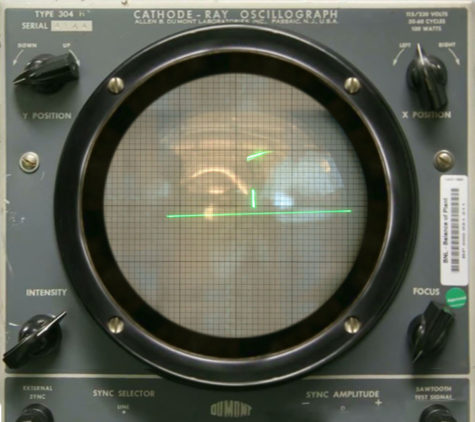
Later in 1972, Pong would become the successor of Tennis for Two. Created by Atari’s founder Nolan Bushnell, Pong would sell 8000 units. Pong would further evolve and is sold as a single-game console system in 1975 according to Britannica.
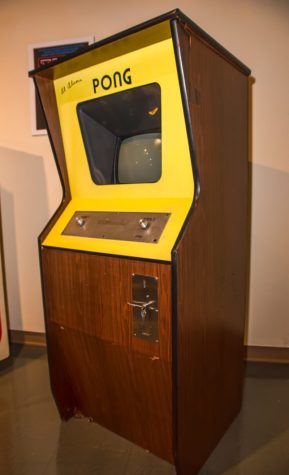
The 1980s started with Atari’s grip over the video games industry, but it wouldn’t be positive for long. The previous years have been booming for the industry as revenues kept increasing and games became more innovative than ever.
However, by this time, consoles usually came with different sets of games, which has really frustrated consumers as their hobby will be enabled to be enjoyed with their friends if they have purchased different consoles. This frustration is further amplified by the dubious quality of the consoles and the games that came out, with the worst offender being ET.
The failure of ET
ET was the most famous example of a game being shipped with poor quality. The National Museum Of American History, in a page that contained information on ET and the final buried copies of ET left to disintegrate, stated that the creator of ET, Howard Scott Warshaw, was forced on a schedule of five and a half weeks instead of the typical five or six months required to create the game.
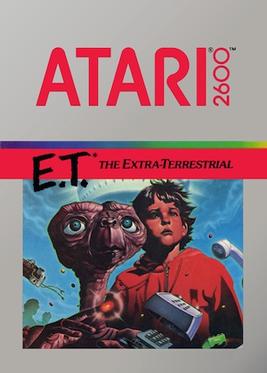
Not only that he had to crunch time, due to the licensing agreement on ET: the Extraterrestrial. Atari is forced to break even by trying to hit the sale figure of four million copies. Atari rushed the deadline by one-fifty to try and utilize a high amount of profit by selling ET during Christmas.
The game only sold one million copies, and those one million copies generated complaints, causing a rise in return, a drop in sales, and Atari suffering a massive loss.
David Beren, a contributor to Computer History contributed these factors towards the industry itself hitting a downturn in an event called “The Video Games Crash of 1983”.
Crashing in the 80s, Nintendo pushing through the failure
The aftermath of the crash would see multiple big names in the industry either losing or pulling off completely. A 1983 issue of the New York Times concerning business in the industry reported a loss of $536 million for Atari, the biggest name in the game at the time
Nintendo would become the leading factor in restoring the industry. While the U.S. was experiencing the crash, Japan was only switching from arcades to the home game console. Famicom was a massive success in Japan, with 19% of the Japanese population owning a Famicom.
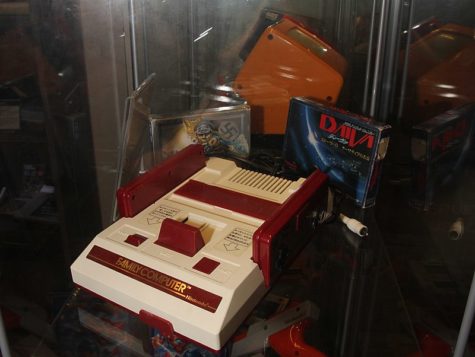
What made Famicom so successful is its usage of microprocessors instead of transistor-transistor logic which allowed it to do more than the standard console with built-in games, such as the ability to read Read Only Memory (ROM) cartridges, and display in 8 bits. This edge over the game consoles of the current era and its success in the Japanese market caused Nintendo to set eyes on the North American market and hit it big.
But it never got big, not under the name Famicon. As the game crash happened, due to consumer confidence in the game industry being low, affecting sales figures, stores were reluctant to shelve another game console, fearing a loss.
Changing its name to Nintendo Entertainment System or NES, they encouraged consumers to give it a try and they loved it. Since Nintendo is bent on quality-checking games, not oversaturating the market with a large amount of low-quality games, and creating parity due to the ROM cartridges working with all NES consoles, this has restored consumers’ faith in the industry.
The NES sold 33.49 million units in North America according to Statista, and the rest of that decade would see the restoration of the video game industry, raking in a sum of $5 billion dollars by 1989, and have set a massive precedent for the industry to follow, to not flood and if have to, flood it with utmost quality.
MSX, a weapon to surpass Metal Gear
Another product that would come out of the 1983 video game crash would be the MSX standard. Titles that are most known on the MSX are Contra in 1989 and Metal Gear in 1987. MSX allowed home computers to have software exchangeability which created a universal way of game development and operation.
MSX as an acronym has lost its meaning over time and the only meaning it has is make-believe. Kazuhiko Nishi, vice-president of Microsoft in 1983 and the director of the ASCII corporation recalled that it was “Microsoft Extended” during an MSX fair in Tilburg in 2001.
The next decade of Video Games would start with the Playstation in 1995, which used Compact Discs (CD) to run games, effectively moving the industry from using cartridges. The Playstation sold 102.4 million units as of March 2012 according to Sony’s business data & sales.
Besides ditching cartridges and using CDs, the PS1 also rendered graphics in 3d using a Graphic Processing Unit and a 32-bit system, finally giving games in this era blocky yet 3d graphics and numbers that are over 255, making them more advanced than the 8-bit games that came before it.
Notable titles, according to Britannica would include Metal Gear Solid, not Metal Gear, Mortal Kombat, Tekken, Resident Evil, and many more. A lot of modern-day titles debuted on the PS1, making it the most important step in videogames history.

Take aim, shoot, and bunnyhop away
On the home computer side of things, John Carmack was pioneering a big step that will set precedent for one of the bigger genres of video games, First Person Shooter (FPS). The popularity of FPS games is to how popular action movies are. Titles like Terminator, Die Hard and Jurassic Park struck a chord with younger kids and teens and caused them to be attracted to action-oriented media.
John Carmack developed Wolfenstein 3-D in 1992 after creating a company called Id Software with some associates after leaving his previous company Softdisk with their previous title, Commander Keen. Wolfenstein 3-D was a violent game as it entails simple gore with Nazis and guard dogs killing action.
After Wolfenstein, came Doom in 1993, as Doom was practically a Wolfenstein under different art as instead of killing Nazis, the game entails killing demons from outer space. These games were a hit even today, and they spawned a sub-genre of games that are referred to as “Doom clones”.
1996 is the precedent for all popular FPS games as the release of Quake took the world by storm as online gaming was becoming increasingly popular and Doom pushed the popularity of fps even further. Quake is the father of all FPS games in the current era, as its engine is licensed to make other fps games, notably, Half-life in 1998 which will be modded later on to become the famous Counter-Strike in 1999.
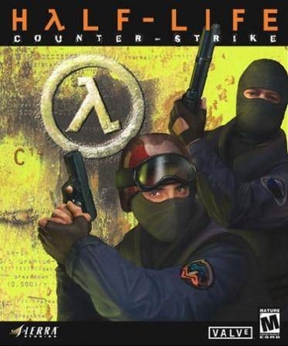
Esports, pushing the limits of mortal humans
Humans are competitive in nature so a mundane game of pong could even turn into a sweaty, competitive venture. While most players are casual players, it still doesn’t stop them from improving themselves and becoming good at the game and its mechanics to gain more enjoyment from it.
Even back in the arcade era, players still competed with each other. The first instance of competitive gaming is back during the arcade era, as players would compete against each other for the highest score in a game.
Atari would lay the foundation for esports in 1980 with their first major tournament. The game the players were competing in was Space Invaders and the winner won a copy of Asteroids by Atari.
The foundations would be added later on as more players started competing over a variety of games, the organizers would form rules, gentleman agreements, and even have rankings for players.
The popularity of esports is further amplified by online gaming, allowing players to directly compete with each other over online servers. Groups of people, usually referred to as clans or teams will eventually be formed between players as they meet online. These clans or teams would have small competitions or skirmishes to see which one of them is better.
Later on, teams would actually compete in bigger LAN tournaments instead of smaller skirmishes with an ever-increasing price pool with the record prize for an esports tournament being $40 million dollars from DOTA the international.
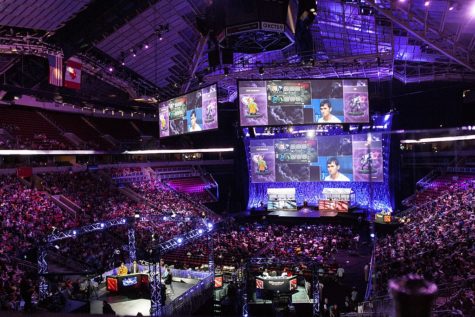
Post 2000: Advanced Console Warfare
Microsoft enters the industry of gaming in 2001 with the release of Xbox or DirectX-box. DirectX is the Microsoft-developed video software used by most modern games later on according to Britannica. The debut of the Xbox caused a split in the consumer base due to exclusivity.
While all parties are capable of allowing the games that are exclusive to their console to be published on other platforms, because of the oligopoly that was created between Microsoft, Sony, and Nintendo, exclusivity with the cost of creating a war for over 2 decades is the best way to grip over it customer and force their hand on buying their console.
An example of a game that is affected by exclusivity is Halo as most Halo titles have not been released on Playstation even until today. On the contrary, Sony has guarded their grips on their stash of exclusive games, mostly Japanese-developed ones such as Nier: Automata (Exclusive to the PS4 for 1 year), Final Fantasy, and Bloodborne. Outliers such as Call of Duty have content delays instead of having the entire game exclusive to a single platform.
From 2000 onward would see a continuous battle to draw in customers between Microsoft and Sony.
The Playstation 2, which debuted in 2000, is Sony’s response to the Xbox, it was the most popular console in history with 155 million units sold worldwide as of March 2012 according to sale data from Sony, surpassing the Nintendo DS and later Playstation 4.
Notable console releases of this decade would be the Xbox 360 in 2005, amassing 85.3 million units sold. Playstation 3 in 2006 with 87.4 million units, the Wii in the same year with 101 million units sold, the Nintendo 3DS in 2011 with 75 million units sold, Xbox One in 2013 with 55 million units sold, and Playstation 4 in the same year with 117.2 million units.
Mobile Gaming Surge: Portable Ops
By 2010, there is a surge in mobile games as the game industry was forgoing making games for fun just to gain profit. Apple released the AppStore in 2009, which was followed by a multitude of apps and games. Mobile games would start to gain more profits than conventional personal computers or console games due to how accessible they are and how easy it is to purchase micro-transaction.
Statista, another statistic site provided revenue figures of $66 million dollars in 2017, a raise to $153 million dollars in 2022, and projects up to $221 million dollars in 2027. It would take a fool to not capitalize on the ever-growing mobile game industry.
However, mobile games wouldn’t see their spot in the mainstream until 2018 with the port of Fortnite for mobile devices. Before mobile games are regarded as cash-grabby, lower-quality games, but after Fortnite was ported for mobile devices and later on, big named game publishers would either have their games ported or create entirely new titles using their intellectual property.
Big-name titles like Player Unknown’s Battle Grounds, Call of Duty, Five Nights At Freddy’s, and Apex Legends have found their way into mobile stores either as ports or as new titles.

Rolling for the five stars, Gacha Impacting the market
Besides the bigger name brand titles, a subgenre of games dubbed “Gacha” which are high-profiting. Gacha, deprived from “Gachapon”, are games that, as defined by How To Geek, “You spend money to open boxes or packs, or collect items, cards, and character.”, to put it in simple terms, these games would provide an incentive through a collectible, commonly a character, for consumers to spend their money on.

Through these incentives, these games would gross a large sum of revenue. Genshin Impact would go on and become the highest-grossing among gacha games along with ranking second on the overall chart, earning $3 billion dollars in its lifetime and bringing in a billion dollars every six months according to Sensor Tower, a business analytics firm.
These games would see a consumer base of 3 million with a majority being in the Asia-Pacific region, stated Influencer Marketing Hub. It is easy to spot someone playing one of these games to pass time everywhere, wherever it is on public transit or just to pass time.
Endgame
Videogames have grown to take a big spot in household entertainment, it is hard to not see someone playing video games everywhere you go. It has come from being a nerdy hobby to being an enjoyable pastime for all ages as games have grown to become more enjoyable for both younger and older audiences.
It is worth at least knowing a bit of videogames history, and learning what turbulence had to be overcome and what evolutions needed to happen for video games to exist today. After all, video games will continue to evolve as our needs for entertainment grows with time.




































































